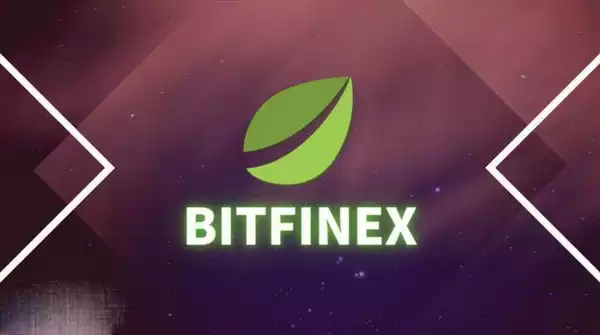-
 Bitcoin
Bitcoin $119800
1.38% -
 Ethereum
Ethereum $3873
3.25% -
 XRP
XRP $3.247
1.85% -
 Tether USDt
Tether USDt $1.001
0.02% -
 BNB
BNB $840.4
5.94% -
 Solana
Solana $190.0
2.55% -
 USDC
USDC $1.000
0.03% -
 Dogecoin
Dogecoin $0.2433
2.69% -
 TRON
TRON $0.3197
-0.05% -
 Cardano
Cardano $0.8367
1.39% -
 Sui
Sui $4.327
3.11% -
 Hyperliquid
Hyperliquid $44.00
0.31% -
 Stellar
Stellar $0.4461
1.76% -
 Chainlink
Chainlink $19.25
4.61% -
 Hedera
Hedera $0.2941
3.90% -
 Bitcoin Cash
Bitcoin Cash $598.4
6.89% -
 Avalanche
Avalanche $26.19
4.67% -
 Litecoin
Litecoin $115.1
0.50% -
 Shiba Inu
Shiba Inu $0.00001427
1.55% -
 Toncoin
Toncoin $3.379
2.01% -
 UNUS SED LEO
UNUS SED LEO $8.966
-0.16% -
 Ethena USDe
Ethena USDe $1.001
0.02% -
 Uniswap
Uniswap $11.04
4.16% -
 Polkadot
Polkadot $4.239
2.00% -
 Monero
Monero $324.6
0.36% -
 Bitget Token
Bitget Token $4.672
2.46% -
 Pepe
Pepe $0.00001294
2.69% -
 Dai
Dai $0.0000
0.01% -
 Cronos
Cronos $0.1443
2.71% -
 Aave
Aave $302.9
1.98%
How to hedge Bitfinex leveraged trading
Hedging Bitfinex leveraged trades involves offsetting price fluctuations with correlated but inversely moving hedging instruments, reducing risk and enhancing profitability.
Nov 13, 2024 at 07:43 am

Hedging Bitfinex Leveraged Trading: A Comprehensive Guide
Hedging is a fundamental risk management technique used to mitigate financial losses and stabilize portfolio returns. In the context of cryptocurrency trading, hedging can be employed to reduce the potential impact of price fluctuations and enhance the overall profitability of leveraged positions. This article provides a comprehensive guide on how to hedge Bitfinex leveraged trading effectively, outlining the key steps involved and addressing frequently asked questions.
Understanding Leveraged Trading on Bitfinex
Leveraged trading amplifies the potential profits and losses of a trade by using borrowed funds. On Bitfinex, traders can leverage their positions up to 100x, allowing them to control a larger amount of capital with a smaller initial investment. While leverage can magnify returns, it also amplifies risks, making it crucial to implement appropriate risk management strategies.
Benefits of Hedging
Hedging offers several benefits in leveraged trading, including:
- Risk Reduction: Hedging reduces the potential downside risk of leveraged positions by offsetting price fluctuations. When the value of the primary asset moves against the trader, the hedge can provide a cushion, mitigating losses.
- Increased Profitability: Hedging can also enhance profitability by allowing traders to maintain leveraged positions for a longer period. By reducing the risk associated with price volatility, hedging creates a more stable trading environment, increasing the likelihood of successful trades.
- Improved Risk-Reward Ratio: Hedging can improve the risk-reward ratio of leveraged trades by stabilizing returns. By reducing the potential downside, hedging allows traders to maintain positions with a higher potential reward while limiting the risk of large losses.
Steps for Hedging Bitfinex Leveraged Trading
- Assess the Underlying Asset: The first step in hedging is to thoroughly understand the underlying asset being traded. This includes researching its historical price movements, market trends, and economic factors that influence its value.
- Choose a Hedging Instrument: The next step is to select a hedging instrument that is correlated but inverse to the underlying asset. This could be a different cryptocurrency, a derivative contract, or a combination of both.
- Determine the Hedge Ratio: The hedge ratio refers to the amount of the hedge instrument that is used to offset the risk of the leveraged position. The optimal hedge ratio depends on the correlation between the underlying asset and the hedging instrument, as well as the trader's risk tolerance.
- Execute the Hedge: Once the hedge ratio is determined, the trader can execute the hedge by placing the appropriate orders on Bitfinex. This typically involves selling the hedging instrument (when the underlying asset is expected to rise) or buying the hedging instrument (when the underlying asset is expected to fall).
- Monitor and Adjust: Hedging is not a set-and-forget strategy. Traders should continuously monitor the hedged positions and make adjustments as needed. This includes rebalancing the hedge ratio if the correlation between the underlying asset and the hedging instrument changes.
Frequently Asked Questions (FAQs)
- What is the best hedging instrument for Bitfinex leveraged trading?
The best hedging instrument depends on the specific asset being traded and the trader's risk tolerance. Some popular hedging instruments include stablecoins, inverse ETFs, and options.
- How do I calculate the optimal hedge ratio?
The optimal hedge ratio is based on the correlation between the underlying asset and the hedging instrument. A higher correlation requires a smaller hedge ratio, while a lower correlation requires a larger hedge ratio.
- When should I exit the hedge?
Traders can exit the hedge when the price of the underlying asset reaches a desired level, when the hedge ratio becomes ineffective, or when the trader wishes to close the leveraged position.
Precautions and Considerations
- Hedging Costs: Hedging typically involves transaction fees, which can reduce the overall profitability of the trade. Traders should consider these costs when determining the feasibility of hedging.
- Complexity: Hedging can be a complex strategy, especially in highly volatile market conditions. Traders should thoroughly understand the risks and rewards involved before implementing hedging techniques.
- Accuracy of Correlation: The effectiveness of hedging depends on the accuracy of the correlation between the underlying asset and the hedging instrument. If the correlation is not as strong as expected, the hedge may not provide the desired protection.
Conclusion
Hedging is a powerful risk management tool that can significantly enhance the profitability and stability of Bitfinex leveraged trading. By following the steps outlined above and addressing the considerations discussed, traders can mitigate potential losses, increase their returns, and trade with greater confidence.
Disclaimer:info@kdj.com
The information provided is not trading advice. kdj.com does not assume any responsibility for any investments made based on the information provided in this article. Cryptocurrencies are highly volatile and it is highly recommended that you invest with caution after thorough research!
If you believe that the content used on this website infringes your copyright, please contact us immediately (info@kdj.com) and we will delete it promptly.
- Tether Gold's Meteoric Rise: Market Cap and Soaring Gold Demand
- 2025-07-28 10:30:11
- Reddit, Crypto, and Altcoins: Navigating the Hype in 2025
- 2025-07-28 10:30:11
- Bitcoin, Altcoin, Volume Surge: Decoding the Crypto Market's Latest Moves
- 2025-07-28 10:50:20
- Bitcoin, Altcoins, and 2024 Targets: A NYC Perspective
- 2025-07-28 10:50:21
- Moo Deng Meme-Coin Mania: ROI or Just Hype?
- 2025-07-28 10:55:13
- Ethereum, Injective, and Tokenized Stock: A New Era in DeFi?
- 2025-07-28 11:10:12
Related knowledge

Why is my Bitstamp futures position being liquidated?
Jul 23,2025 at 11:08am
Understanding Futures Liquidation on BitstampFutures trading on Bitstamp involves borrowing funds to open leveraged positions, which amplifies both po...

Does Bitstamp offer inverse contracts?
Jul 23,2025 at 01:28pm
Understanding Inverse Contracts in Cryptocurrency TradingIn the realm of cryptocurrency derivatives, inverse contracts are a specific type of futures ...

What is the difference between futures and perpetuals on Bitstamp?
Jul 27,2025 at 05:08am
Understanding Futures Contracts on BitstampFutures contracts on Bitstamp are financial derivatives that allow traders to speculate on the future price...

How to find your Bitstamp futures trade history?
Jul 23,2025 at 08:07am
Understanding Bitstamp and Futures Trading AvailabilityAs of the current state of Bitstamp’s service offerings, it is critical to clarify that Bitstam...

Can I use a trailing stop on Bitstamp futures?
Jul 23,2025 at 01:42pm
Understanding Trailing Stops in Cryptocurrency TradingA trailing stop is a dynamic type of stop-loss order that adjusts automatically as the price of ...

Can I use a trailing stop on Bitstamp futures?
Jul 25,2025 at 02:28am
Understanding Trailing Stops in Cryptocurrency Futures TradingA trailing stop is a dynamic type of stop-loss order that adjusts automatically as the m...

Why is my Bitstamp futures position being liquidated?
Jul 23,2025 at 11:08am
Understanding Futures Liquidation on BitstampFutures trading on Bitstamp involves borrowing funds to open leveraged positions, which amplifies both po...

Does Bitstamp offer inverse contracts?
Jul 23,2025 at 01:28pm
Understanding Inverse Contracts in Cryptocurrency TradingIn the realm of cryptocurrency derivatives, inverse contracts are a specific type of futures ...

What is the difference between futures and perpetuals on Bitstamp?
Jul 27,2025 at 05:08am
Understanding Futures Contracts on BitstampFutures contracts on Bitstamp are financial derivatives that allow traders to speculate on the future price...

How to find your Bitstamp futures trade history?
Jul 23,2025 at 08:07am
Understanding Bitstamp and Futures Trading AvailabilityAs of the current state of Bitstamp’s service offerings, it is critical to clarify that Bitstam...

Can I use a trailing stop on Bitstamp futures?
Jul 23,2025 at 01:42pm
Understanding Trailing Stops in Cryptocurrency TradingA trailing stop is a dynamic type of stop-loss order that adjusts automatically as the price of ...

Can I use a trailing stop on Bitstamp futures?
Jul 25,2025 at 02:28am
Understanding Trailing Stops in Cryptocurrency Futures TradingA trailing stop is a dynamic type of stop-loss order that adjusts automatically as the m...
See all articles

























































































